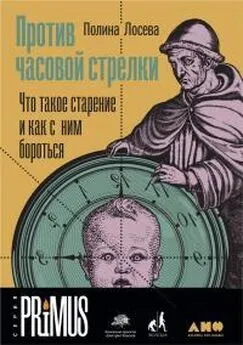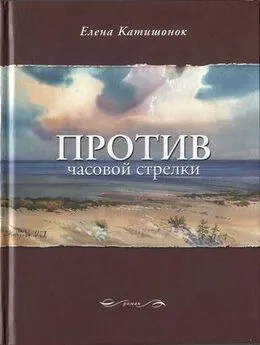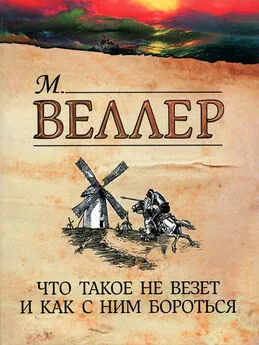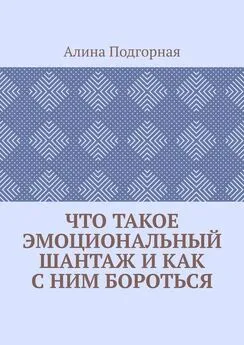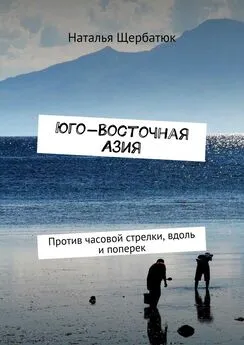Полина Лосева - Против часовой стрелки. Что такое старение и как с ним бороться
- Название:Против часовой стрелки. Что такое старение и как с ним бороться
- Автор:
- Жанр:
- Издательство:Альпина нон-фикшн
- Год:2020
- Город:Москва
- ISBN:978-5-0013-9314-6
- Рейтинг:
- Избранное:Добавить в избранное
-
Отзывы:
-
Ваша оценка:
Полина Лосева - Против часовой стрелки. Что такое старение и как с ним бороться краткое содержание
В своей книге биолог и научный журналист Полина Лосева выступает в роли адвоката современной науки о старении и рассказывает о том, чем сегодня занимаются геронтологи и как правильно интерпретировать полученные ими результаты. Кто виноват в том, что мы стареем? Что может стать нашей защитой от старости: теломераза или антиоксиданты, гормоны или диеты? Биологи пока не пришли к единому ответу на эти вопросы, и читателю, если он решится перейти от размышлений к действиям, предстоит сделать собственный выбор.
Эта книга станет путеводителем по современным теориям старения не только для биологов, но и для всех, кому интересно, как помочь своему телу вести неравную борьбу со временем.
Против часовой стрелки. Что такое старение и как с ним бороться - читать онлайн бесплатно ознакомительный отрывок
Интервал:
Закладка:
235
Bowling S. et al. P53 and mTOR signalling determine fitness selection through cell competition during early mouse embryonic development // Nature Communications. 2018 May; 9: 1763.
236
Levayer R., Dupont C., Moreno E. Tissue crowding induces caspase-dependent competition for space // Current Biology. 2016 Mar; 26 (5): 670–677.
237
Coelho D. S. et al. Culling less fit neurons protects against amyloid-β-induced brain damage and cognitive and motor decline // Cell Reports. 2018 Dec; 25 (13): 3661–3673.e3.
238
Liu N. et al. Stem cell competition orchestrates skin homeostasis and ageing // Nature. 2019 Apr; 568: 344–350.
239
Ellis S. J. et al. Distinct modes of cell competition shape mammalian tissue morphogenesis // Nature. 2019 May; 569: 497–502.
240
Adams P. D., Jasper H., Rudolph K. L. Aging-induced stem cell mutations as drivers for disease and cancer // Cell Stem Cell. 2015 Jun; 16 (6): 601–612.
241
Wagstaff L. et al. Mechanical cell competition kills cells via induction of lethal p53 levels // Nature Communications. 2016 Apr; 7: 11373.
242
Palmer A. K. & Kirkland J. L. Aging and adipose tissue: potential interventions for diabetes and regenerative medicine // Experimental Gerontology. 2016 Dec; 86: 97–105.
243
Sasaki A. et al. Obesity suppresses cell-competition-mediated apical elimination of RasV12-transformed cells from epithelial tissues // Cell Reports. 2018 Apr; 23 (4): 974–982.
244
Ambrosi T. H. et al. Adipocyte Accumulation in the Bone Marrow during Obesity and Aging Impairs Stem Cell-Based Hematopoietic and Bone Regeneration // Cell Stem Cell. 2017 Jun; 20 (6): 771–784.e6.
245
См. п. 51.
246
Collado M. C. Human gut colonisation may be initiated in utero by distinct microbial communities in the placenta and amniotic fluid // Scientific Reports. 2016 Mar; 6: 23129.
247
Santoro A. et al. Gut microbiota changes in the extreme decades of human life: a focus on centenarians // Cellular and Molecular Life Sciences. 2017 Oct; 75:129–148.
248
Suzuki T. A. & Worobey M. Geographical variation of human gut microbial composition // Biology Letters. 2014 Feb; 10 (2): 20131037.
249
He Y. et al. Regional variation limits applications of healthy gut microbiome reference ranges and disease models // Nature Medicine. 2018 Aug; 24: 1532–1535.
250
Schnorr S. L. et al. Gut microbiome of the Hadza hunter-gatherers // Nature Communications. 2014 Apr; 5: 3654.
251
David L. A. et al. Diet rapidly and reproducibly alters the human gut microbiome // Nature. 2013 Dec; 505: 559–563.
252
См. п. 103.
253
Brito I. L. et al. Transmission of human-associated microbiota along family and social networks // Nature Microbiology. 2019 Mar; 4: 964–971.
254
См. п. 103.
255
Vaisserman A. M., Koliada A. K., Marotta F. Gut microbiota: A player in aging and a target for anti-aging intervention // Ageing Research Reviews. 2017 May; 35: 26–45.
256
O'Toole P. W. & Jeffery I. B. Gut microbiota and aging // Science. 2015 Dec; 350 (6265): 1214–1215.
257
Biagi E. et al. Gut microbiota and extreme longevity // Current Biology. 2016 Jun; 26 (11): 1480–1485.
258
Biagi E. et al. The aging gut microbiota: new perspectives // Ageing Research Reviews. 2011 Sep; 10 (4): 428–429.
259
Kundu P., Blacher E., Elinav E., Pettersson S. Our gut microbiome: the evolving inner self // Cell. 2017 Dec; 171 (7): 1481–1493.
260
Strachan D. O. Hay fever, hygiene, and household size // BMJ. 1989 Nov; 299 (6710): 1259–1260.
261
Fleming J. O. Helminth therapy and multiple sclerosis // International Journal for Parasitology. 2013 Mar; 43 (3–4): 259–274.
262
Kondrashova A., Seiskari T., Ilonen J., Knip M., Hyöty H. The 'Hygiene hypothesis' and the sharp gradient in the incidence of autoimmune and allergic diseases between Russian Karelia and Finland // APMIS. 2012 Nov; 121 (6): 478–493.
263
См. п. 111.
264
Alcock J., Maley C. C., Aktipis C. A. Is eating behavior manipulated by the gastrointestinal microbiota? Evolutionary pressures and potential mechanisms // BioEssays. 2014 Aug; 36 (10): 940–949.
265
Selking J., Wong P., Zhang X., Pettersson S. Metabolic tinkering by the gut microbiome // Gut Microbes. 2014 May; 5 (3): 369–380.
266
Cai D. et al. Nutrient intake is associated with longevity characterization by metabolites and element profiles of healthy centenarians // Nutrients. 2016 Sep; 8 (9): 564.
267
Kundu P. et al. Neurogenesis and prolongevity signaling in young germ-free mice transplanted with the gut microbiota of old mice // Science Translational Medicine. 2019 Nov; 11 (518): eaau4760.
268
См. п. 120.
269
См. п. 113.
270
См. п. 112.
271
Marlowe F. W. & Berbesque J. C. Tubers as fallback foods and their impact on Hadza hunter‐gatherers // American Journal of Physical Anthropology.. 2009 Apr; 140 (4): 751–758.
272
Marlowe F. The Hadza // Encyclopedia of Medical Anthropology, 2004 Edition.
273
Raichlen D. A. et al. Physical activity patterns and biomarkers of cardiovascular disease risk in hunter‐gatherers // American Journal of Human Biology. 2016 Oct; 29: e22919.
274
См. п. 103.
275
Stebegg M. et al. Heterochronic faecal transplantation boosts gut germinal centres in aged mice // Nature Communications. 2019 Jun; 10: 2443.
276
Bárcena. C. et al. Healthspan and lifespan extension by fecal microbiota transplantation into progeroid mice // Nature Medicine. 2019 Jul; 25: 1234–1242.
277
См. п. 123.
278
Franceschi C. & Campisi J. Chronic inflammation (inflammaging) and its potential contribution to age-associated diseases // The Journals of Gerontology: Series A. 2014 Jun; 69 (suppl 1): S4–S9.
279
Franceschi C., Garagnani P., Vitale G., Capri M., Salvioli S. Inflammaging and "garb-aging" // Trends in Endocrinology & Museum. 2017 Mar; 28 (3): 199–212.
280
Franceschi C., Garagnani P., Parini P., Giuliani C., Santoro A. Inflammaging: a new immune – metabolic viewpoint for age-related diseases // Nature Reviews Endocrinology. 2018 Jul; 14: 576–590.
281
См. п. 134.
282
Franceschi C. et al. Inflamm-aging: an evolutionary perspective on immunosenescence // Annals of the New York Academy of Sciences. 2006 Jan; 908 (1): 244–254.
283
Salminen A. et al. Activation of innate immunity system during aging: NF-kB signaling is the molecular culprit of inflamm-aging // Ageing Research Reviews. 2008 Apr; 7 (2): 83–105.
284
См. п. 139.
285
Pinti M. et al. Aging of the immune system: Focus on inflammation and vaccination // European Journal of Immunology. 2016 Sep; 46 (10): 2286–2301.
286
Johnson N. D. & Conneely K. N. The role of DNA methylation and hydroxymethylation in immunosenescence // Ageing Research Reviews. 2019 May; 51: 11–23.
287
Franceschi C. et al. Inflammaging 2018: An update and a model // Seminars in Immunology. 2018 Dec; 40: 1–5.
288
Lachmann R. et al. Cytomegalovirus (CMV) seroprevalence in the adult population of Germany // PLOS One. 2018 Jul; 13 (7): e0200267.
289
Avivi I. et al. Depletion of B cells rejuvenates the peripheral B‐cell compartment but is insufficient to restore immune competence in aging // Aging Cell. 2019 May; 18 (4): e12959.
290
См. п. 134.
291
См. п. 143.
292
Franceschi C. et al. Inflammaging and anti-inflammaging: A systemic perspective on aging and longevity emerged from studies in humans // Mechanisms of Ageing and Development. 2007 Jan; 128 (1): 92–105.
293
См. п. 136.
294
Ouchi N., Parker J. L., Lugus J. J., Walsh K. Adipokines in inflammation and metabolic disease // Nature Reviews Immunology. 2011 Jan; 11: 85–97.
295
См. п. 141.
296
Ostan R. et al. Inflammaging and cancer: a challenge for the Mediterranean diet // Nutrients. 2015 Apr; 7 (4): 2589–2621.
297
Calcer P. C. et al. Health relevance of the modification of low grade inflammation in ageing (inflammageing) and the role of nutrition // Ageing Research Reviews. 2017 Nov; 40: 95–119.
298
Yiallouris A. et al. Adrenal aging and its implications on stress responsiveness in human // Frontiers in Endocrinology, 2019 Feb; 10: 54.
299
Zhang G. et al. Hypothalamic programming of systemic ageing involving IKK-β, NF-kB and GnRH // Nature. 2013 May; 497: 211–216.
300
Galkin F., Zhang B., Dmitriev S. E., Gladyshev V. N. Reversibility of irreversible aging // Ageing Research Reviews. 2019 Jan; 49: 104–114.
301
Mechanisms in endocrinology: Aging and anti-aging: a Combo-Endocrinology overview // European Journal of Endocrinology. 2017 Jun; 176 (6): R283–R308.
302
Franceschi C. et al. Do men and women follow different trajectories to reach extreme longevity? // Aging Clinical and Experimental Research. 2000; 12: 77–84.
303
Almeida M. Aging mechanisms in bone // BoneKEy Reports. 2012 Jul; 1 (7): 102.
304
Vitale G., Cesari M., Mari D. Aging of the endocrine system and its potential impact on sarcopenia // European Journal of Internal Medicine. 2016 Nov; 35: 10–15.
305
Buford T. W. & Willoughby D. S. Impact of DHEA (S) and cortisol on immune function in aging: a brief review // Applied Physiology, Nutrition, and Metabolism. 2008 Apr; 33 (3): 429–433.
306
Lai J. C. L. & Lee D. Y. H. Network cultivation, diurnal cortisol and biological ageing: The rejuvenation hypothesis // Medical Hypotheses. 2019 Jan; 122: 1–4.
307
См. п. 154.
308
Yakar S. et al. Inhibition of growth hormone action improves insulin sensitivity in liver IGF-1 – deficient mice // Journal of Clinical Investigations. 2004 Jan; 113 (1): 96–105.
Читать дальшеИнтервал:
Закладка:
